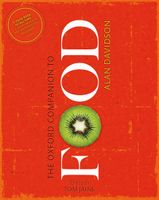Advertisement
Pasty
Appears in
Published 2014
The word pasty came into English, via old French, from the Latin pasta (dough). In the Middle Ages, pasties were often very large, and generally meant meat or fish, well seasoned, enclosed in pastry and baked (similar to modern en croûte dishes, see crouton). While pasties were made without a mould and contained a single type of filling, a pie contained a mixture and eventually became the name for the deeper, raised form. In both, the pastry was made to recipes and baked in a way that would make it too tough to be eaten.


